基于人机工程学的汽车驾驶室虚拟设计(含CAD图,CATIA三维图)

1.无需注册登录,支付后按照提示操作即可获取该资料.
2.资料以网页介绍的为准,下载后不会有水印.资料仅供学习参考之用.
密 惠 保
基于人机工程学的汽车驾驶室虚拟设计(含CAD图,CATIA三维图)(任务书,开题报告,文献摘要,外文翻译,论文说明书30000字,CAD图3张,CATIA三维图)
摘要
本文基于人机工程学和虚拟设计理论,对选定车型的汽车驾驶室进行虚拟设计与人机评价,以期缩短驾驶室设计周期和减轻驾驶员驾驶过程中的疲劳程度。首先利用CATIA软件进行汽车驾驶室内各部件的建模与装配,再利用ANSYS软件对汽车座椅骨架进行模态分析,通过对振型与共振频率的分析,验证所设计的汽车驾驶室的动态舒适性,最后在CATIA人机工程学设计与分析平台对坐姿舒适性、视野与手伸及范围进行了校核,其中坐姿舒适性包括角度校核与快速上肢评价。主要进行的工作如下所示:
(1)对相关的虚拟设计理论进行了深入了解和学习,确定本次设计中所要采用的虚拟设计方法与形式,基本完成对汽车驾驶室设计形成初步构想。
(2)掌握汽车驾驶室设计中要用到的人机工程学理论和布置工具,以期为驾驶室内各部件的布置设计奠定理论基础。
(3)根据国家及行业相关标准,结合虚拟设计理论和人机工程学理论,依次对驾驶室内的踏板、座椅、转向盘、仪表盘、A柱以及汽车顶盖进行布置设计并利用CATIA软件建立三维模型。
[资料来源:THINK58.com]
(4)根据座椅模型对座椅骨架模型进行构建,并针对座椅骨架模型进行模态分析,得出其6阶振型和共振频率,将共振频率与路面激励频率和人体敏感频率进行分析比较,预测汽车驾驶室的动态舒适性。
(5)在CATIA人机工程学设计与分析平台中分别对坐姿舒适性、视野及手伸范围进行评价,其中坐姿舒适性是先校核驾驶员各关节角度是否位于舒适坐姿下的角度范围内,再使用快速上肢评价功能对人体模型进行评价打分。视野和手伸及范围采用的是直接建立再确定其是否符合基于人机工程学的设计要求。
本文研究的虚拟设计方法能大幅度缩短汽车驾驶室的设计周期、降低设计成本;人机工程学理论则是能减轻驾驶员驾驶过程中的疲劳程度,让人机结合得更为彻底,保证车辆安全行驶;模态分析的加入,保证了驾驶室动态舒适性,减轻驾驶员因车辆振动引起的不舒适感。
关键词:虚拟设计 人机工程学 汽车驾驶室 模态分析 人机评价
Abstract
Based on the theory of ergonomics and virtual design, this paper carries out virtual design and human-vehicle evaluation of the car cabs of selected models in order to shorten the cab design cycle and reduce the driver's fatigue during driving. Firstly, the CATIA is used to model and assemble the components in the car's cab, and then ANSYS is used to perform modal analysis on the car seat skeleton. The dynamic comfort of the designed car cab is verified by analyzing the vibration mode and resonant frequency. In the end, the CATIA ergonomics design and analysis platform was used to check the comfort, field of vision, hand extension, and range of the sitting posture. The comfort of the sitting posture included angle checking and rapid upper limb evaluation. The main work is as follows: [来源:http://www.think58.com]
(1) In-depth understanding and study of relevant virtual design theory, determine the virtual design method and form to be used in this design, and basically complete the initial conception of the design of the car cab.
(2) Grasp the ergonomic theory and layout tools to be used in the design of car cabs, in order to lay a theoretical foundation for the layout design of various components in the cab.
(3) According to national and industry-related standards, combined with virtual design theory and ergonomics theory, the layout of the cab's pedals, seats, steering wheel, instrument panel, A-pillar, and automobile top cover is sequentially designed and utilized by CATIA.
(4) The seat skeleton model is constructed according to the seat model, and the modal analysis of the seat skeleton model is performed to obtain the 6th vibration mode and resonance frequency, and the resonance frequency is analyzed with the road excitation frequency and the human sensitive frequency. Compare and predict the dynamic comfort of the car's cab.
[资料来源:http://think58.com]
(5) Using CATIA to evaluate sitting comfort, field of vision and hand extension range. Among them, sitting comfort is to check whether the angle of the driver's joints is within the angle range of the comfortable sitting posture ,Then use the fast upper limb evaluation function to score the human body model. The field of vision, hand reach, and range are established directly to determine whether it meets ergonomic design requirements.
The virtual design method studied in this paper can greatly shorten the design cycle of the car's cab and reduce the design cost. The ergonomics theory can reduce the driver's fatigue during the driving process, make the combination of the machine more thoroughly and ensure the vehicle. Safe driving; the addition of modal analysis ensures the dynamic comfort of the driver's cab and reduces driver's discomfort caused by vehicle vibration.
Keywords: Virtual design;Ergonomics;Vehicle cab;Modal analysis;Human assessment
[资料来源:www.THINK58.com]
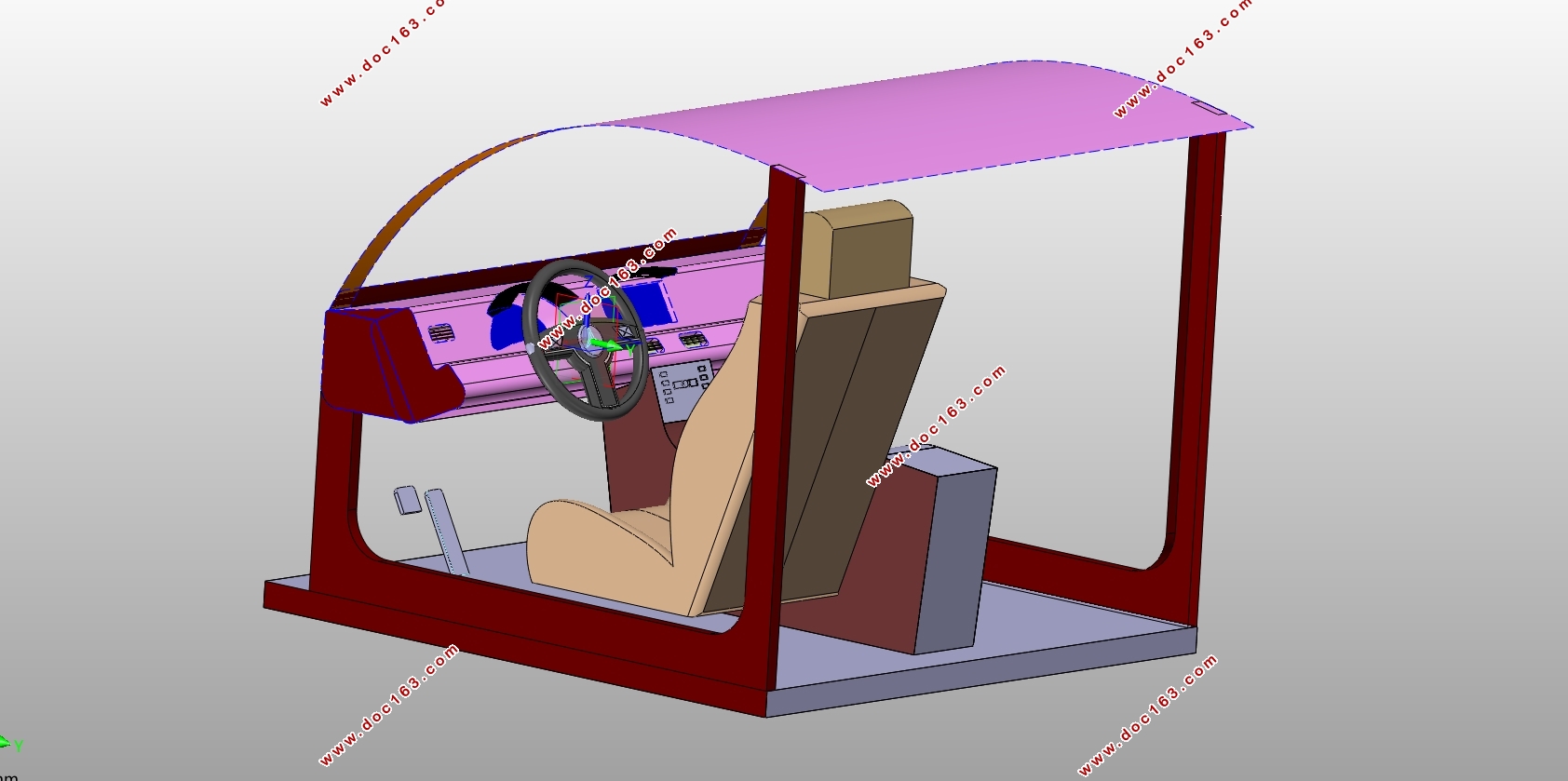
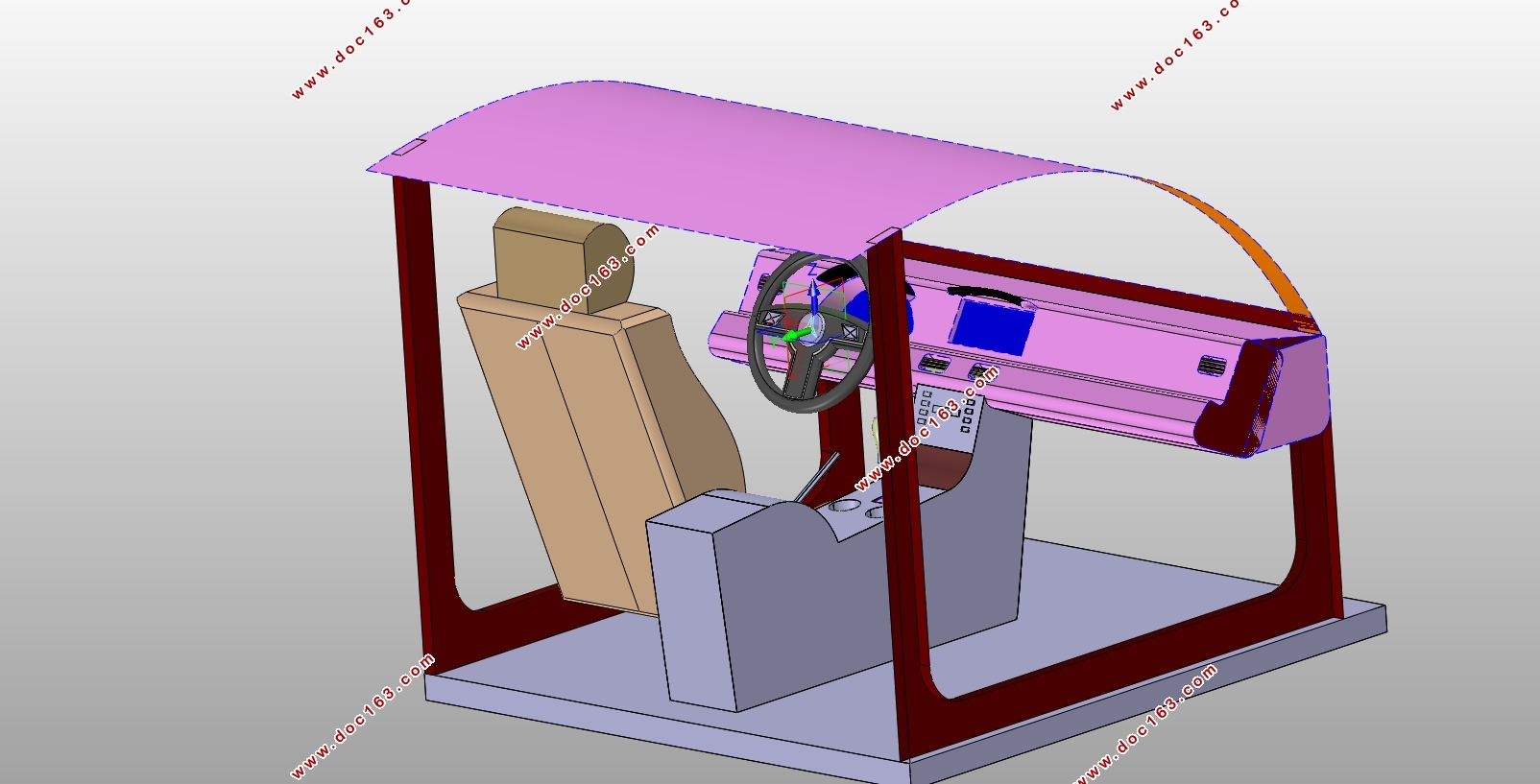
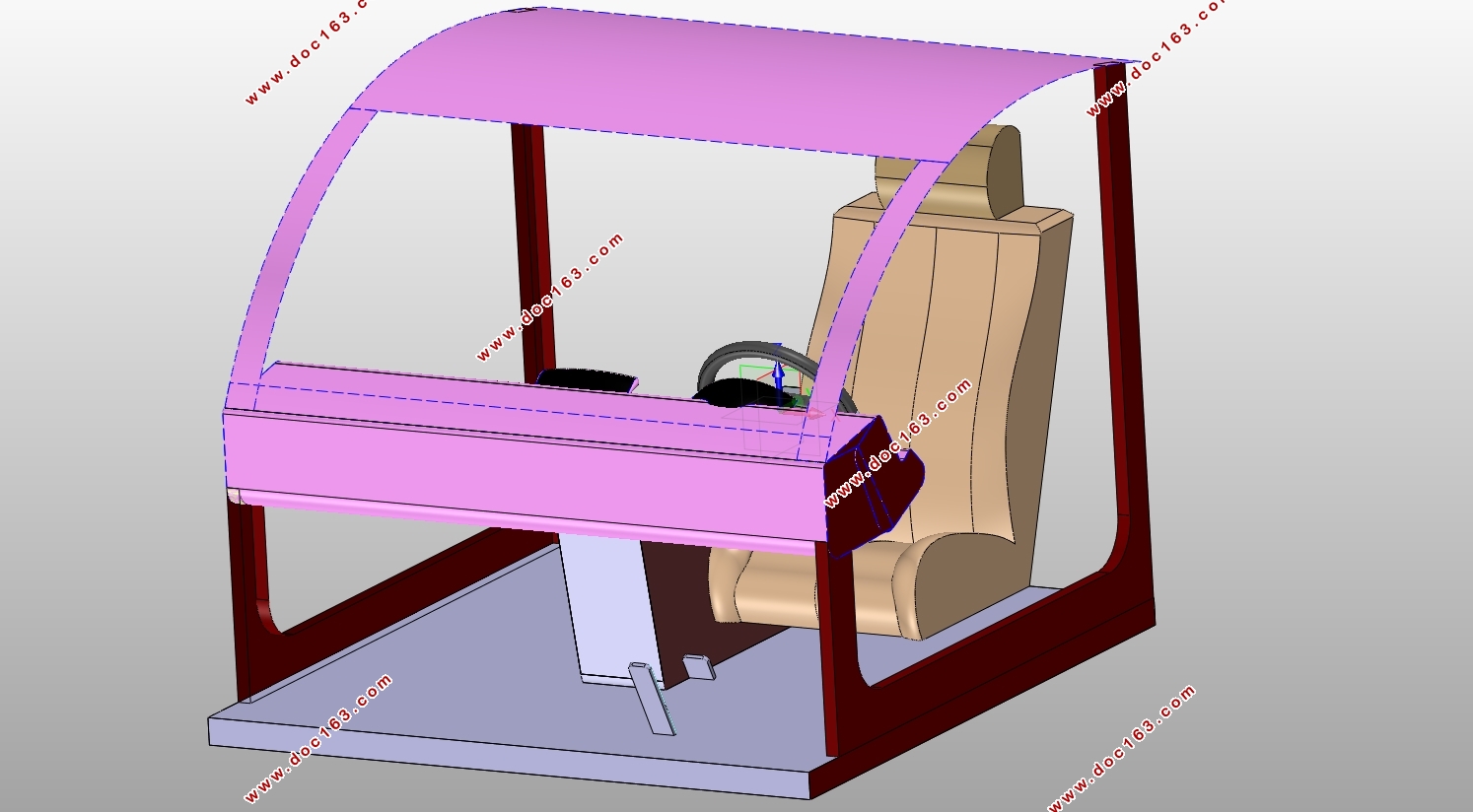
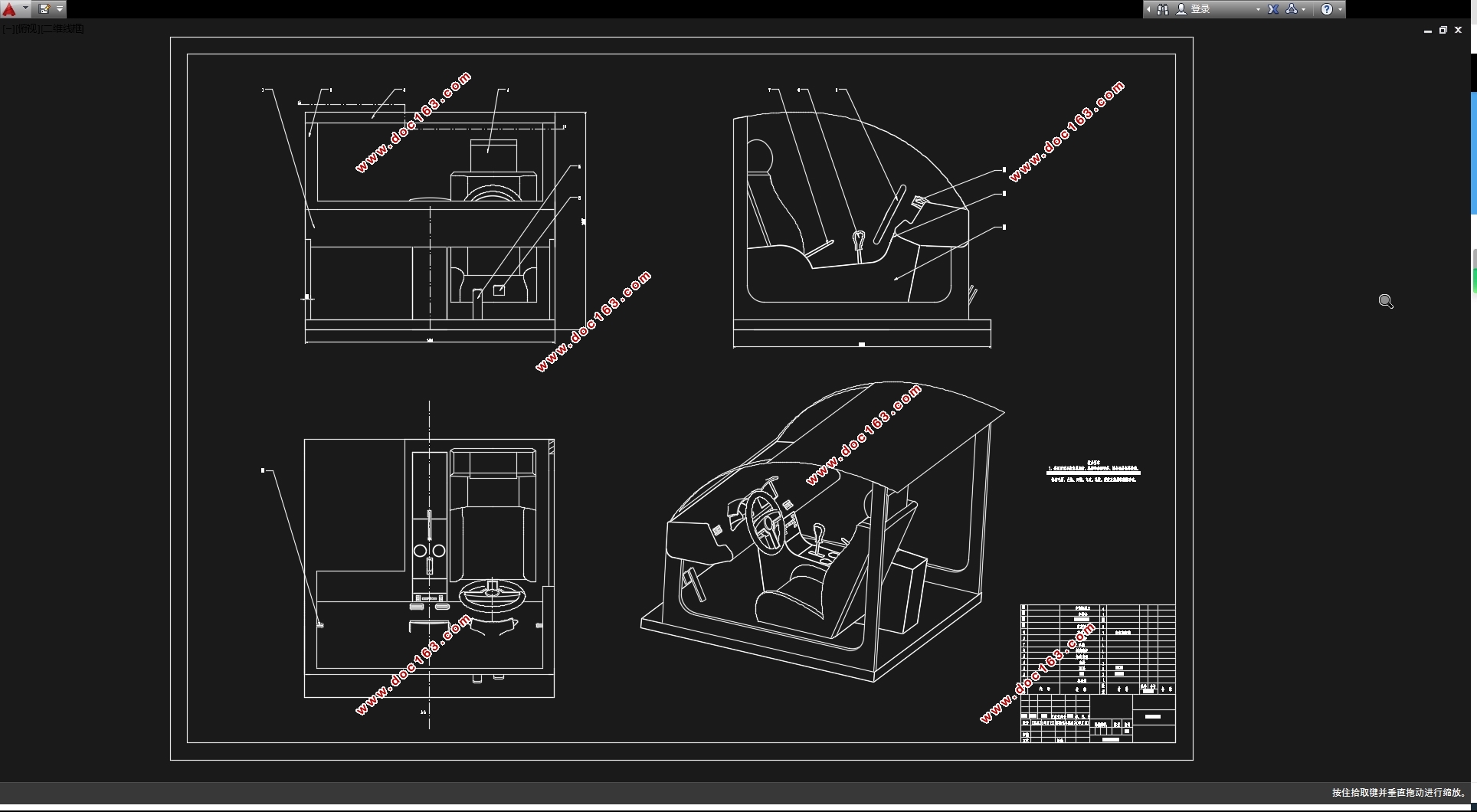
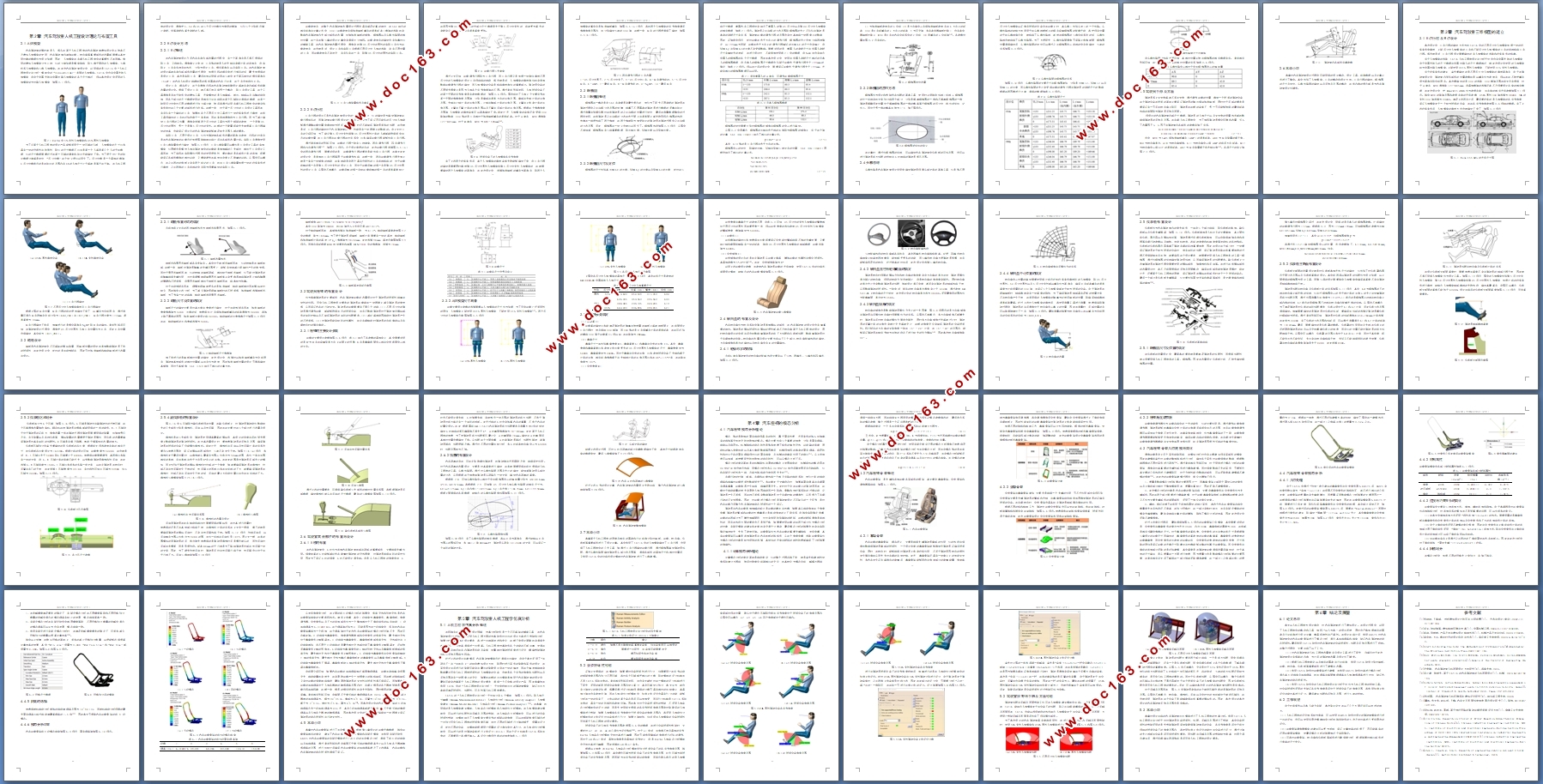

目录
第1章 绪论 1
1.1 虚拟设计 1
1.1.1虚拟设计概述 1
1.1.2虚拟设计方法 2
1.2人机工程学概述 3
1.3研究的目的及意义 4
1.4国内外研究现状及发展前景分析 4
1.4.1国内外研究现状分析 5
1.4.2发展前景分析 5
1.5 研究内容 6
1.6本章小结 6
第2章 汽车驾驶室人机工程设计理论与布置工具 7
2.1人体模型 7
2.2 H点设计方法 7
2.2.1 H点概述 8
2.2.2 H点行程 9
2.3 眼椭圆 11
[资料来源:THINK58.com]
2.3.1眼椭圆概述 11
2.3.2眼椭圆尺寸及定位 11
2.3.3眼椭圆的应用方法 13
2.4头廓包络 13
2.5驾驶员手伸及界面 15
2.6本章小结 16
第3章 汽车驾驶室三维模型的建立 17
3.1 H点行程及R点设计 17
3.2 踏板设计 18
3.2.1 踏板布置形式的确定 19
3.2.2 踏板尺寸及位置的确定 19
3.3驾驶员座椅的布置设计 20
3.3.1座椅的主要设计参数 20
3.3.2人体模型尺寸测量 21
3.3.3座椅参数确定 22
3.4 转向盘的布置及设计 23
3.4.1 轮辐形状的选择 24
3.4.2 转向盘直径与轮缘截面的确定 24
3.4.3转向盘倾角的确定 24
3.4.4 转向盘中心位置的确定 25
3.5 仪表板布置设计 26
[资料来源:http://think58.com]
3.5.1 眼椭圆尺寸及位置的确定 26
3.5.2 仪表板主断面布置设计 27
3.5.3仪表板区域划分 29
3.5.4副仪表板的布置设计 30
3.6 驾驶室其他部件的布置与设计 31
3.6.1 A柱的布置 31
3.6.2顶盖的布置设计 32
3.7本章小结 33
第4章 汽车座椅的模态分析 34
4.1 汽车座椅模态分析理论 34
4.1.1计算模态分析理论 34
4.2汽车座椅骨架概述 35
4.2.1 靠背骨架 35
4.2.2 坐垫骨架 36
4.2.3 座椅角度调节器 37
4.3 汽车座椅骨架几何建模与简化 37
4.4 汽车座椅骨架模态分析 38
4.4.1 几何处理 38
4.4.2 材料属性 39
4.4.3 连接与约束关系的简化 39
4.4.4 网格划分 39 [资料来源:www.THINK58.com]
4.4.5 阶数的选择 40
4.4.6 模态分析结果 40
4.5 本章小结 42
第5章 汽车驾驶室人机工程学仿真分析 43
5.1 人机工程学仿真分析概述 43
5.2 坐姿舒适性检验 44
5.2 驾驶室视野与手触及界面检验 47
5.3 本章小结 48
第6章 结论及展望 49
6.1 论文总结 49
6.2 工作展望 49
参考文献 50
致 谢 52
上一篇:某矿用车辆悬架系统设计与分析(含CAD零件图装配图)
下一篇:基于某车型盘式制动器设计及有限元分析(含CAD图,CATIA三维图)
